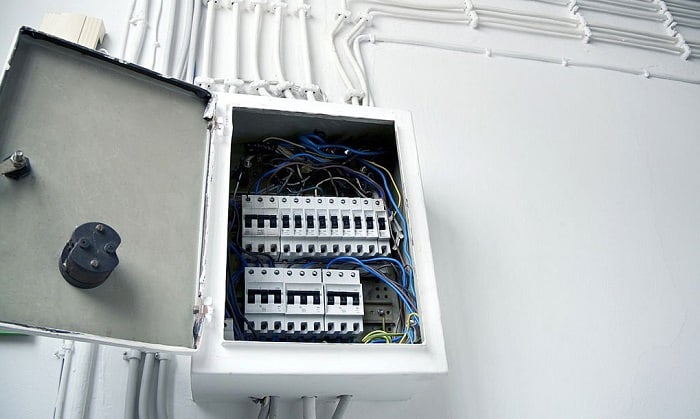
Electrical panels are integral components of every building. They protect our homes against dangers like fire and electrocution.
However, how do electrical panels work? To give you a brief idea, inside the electrical panel, there are breakers that control each individual circuit in your entire house.
Table of Contents
What Is an Electrical Panel
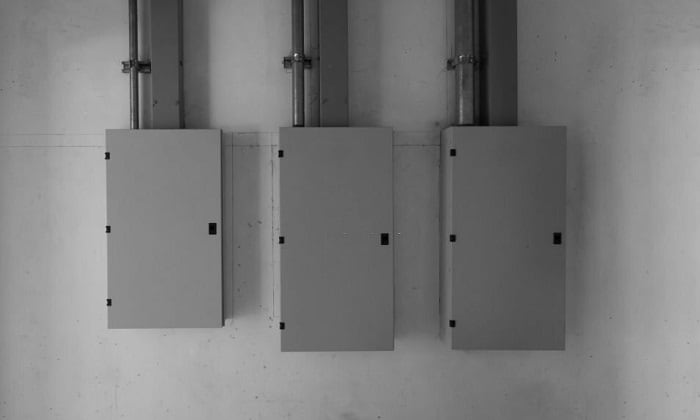
Electrical panels, or breaker panels as called by other people, are typically made with metal. They are shaped as a box and built within the wall for space conservation purposes. It is inside the home electrical panel door that you can see all your house’s circuit breaker switches.
As I have said above, the importance of electrical panels cannot be understated in every household.
The parts of an electrical panel are: breaker switches, grounding bus bar or neutral bus bar, hot bus bars, and transfer switches. Power would come from the electric utility grid to your home’s electric meter before being routed to the panel.
In particular, electrical panels are regarded to be the chief electrical wiring distribution system of your home. They are responsible for dividing the incoming electrical current by branching it out to the respectively installed breakers.
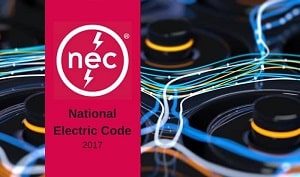
The National Electric Code (NEC) states that for a breaker box to qualify as an electrical panel, it has to have the following characteristics:
- Consists of multiple units specifically assembled in the configuration of a single panel for easier operation
- Installed with multiple electric tools and instruments deemed important to ensure the electrical safety of facilities
- Is placed in an accessible area, within or against the wall, and is only reachable from the front
How Does an Electrical Panel Work
Now that we have an electrical panel explained, our question should now be directed towards how the main panel works.
As we have discussed earlier, electrical panels store single pole circuit breakers and double pole breakers.
Each breaker is connected to its own circuit. When the appliances of that circuit use too much power, the breaker trips and cuts off electricity to those appliances. Once this happens, the breaker turns to the off position and needs to be reset.
It’s important to size circuit breakers according to the amperage of the devices they support. Single pole breakers can only handle 15-20 amps, while double pole ones can regulate 15 to 200 amps. As a result, large appliances should be paired with the latter only.
Where to Find Your Electrical Panel
Because electrical panels are important, they are typically installed in secluded places of your home to prevent undue interference.
As such, breaker boxes can often be found in basements, garages, and storage rooms. However, the same couldn’t be said for apartments. Because of the lack of extra space in flats and units, electrical panels are often installed behind doors. Some are even installed nearby air conditioners or electrical outlets.
Types of Electrical Panel
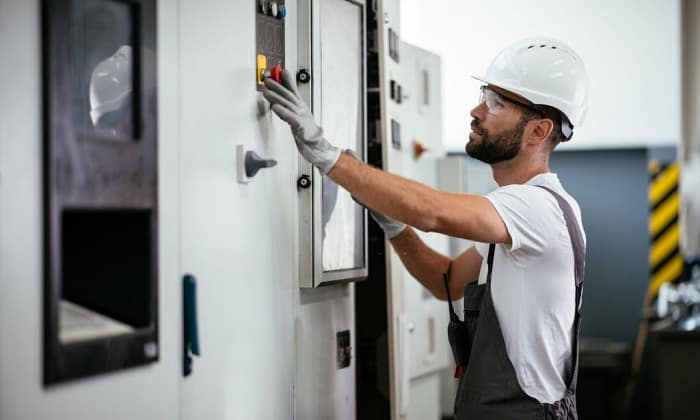
Now, there are several types of main breaker panels, each with distinct characteristics. These types of electrical panels are installed commonly in industrial or commercial buildings and aren’t common for households.
Still, I took the liberty of listing these four types of panels, since you might want to learn more about these safety devices.
1. Lighting Electrical Panels
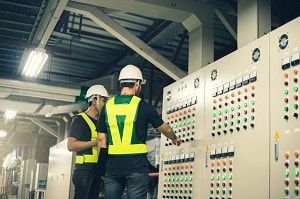
This kind of circuit breaker panel is capable of providing overcurrent protection and disconnecting lights, appliances, receptacles, and other minor load circuits without difficulty.
Notably, this fuse box type is used to regulate the electrical circuit in public locations like parks and streets, and is often put in transformer stations. This usage makes these electrical devices essential in modern life.
2. Power Electrical Panels
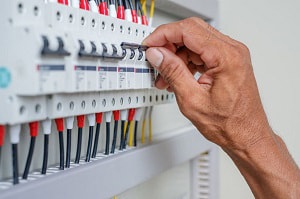
This type of main electrical panel box is more prevalent in industrial establishments where the consumption of electricity is more demanding and complex. As such, this main service panel is capable of providing broad-system interoperability and multi-system-level electrical solutions.
The need to install a power electrical service panel stems from the fact that some facilities require changes in electrical power regulation in a fast and orderly manner through the main circuit breaker, which could not be possible in regular breaker boxes.
3. Switchboards
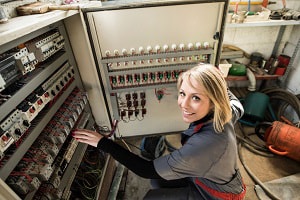
This type of electrical system device is reserved mainly for buildings that are larger in scale. In detail, this type of breaker panel is used to mount switches, arc fault circuit interrupters, electrical regulation devices, and buses that are capable of immediate overcurrent protection.
Unlike regular panels, switchboards are floor-mounted due to their size. The reason why switchboards are mounted on the floor is mainly due to the fact that they divide larger blocks of circuit breakers for easier operation.
4. Low Voltage Switchgears
This is a special niche of electrical panels. Particularly, low voltage switchgears are mainly used for isolated facilities whose electrical load input is extra critical. As the name suggests, it controls power (low voltage) of select appliances, instruments, and utility installations within the facility it is covering.
Upgrading Your Electrical Panel
In general, the cost of upgrading your household’s electrical panel depends largely on how extensive the work that would be done is. But to give you an idea, the range typically varies around $2,000 to $2,500 for a 100-ampere servicing.
On the other hand, the price to upgrade your electrical panel to be capable of handling 200 amperes varies from $3,500 to $5,000.
If you want to get accurate pricings on the upgrade that would be done on your electrical panel, get in touch with a licensed electrician or electrical contractor (multiple electricians would also be recommended) and have them quote the price for the range of work that you’d get done.
Conclusion
Knowing how do electrical panels work is vital for every homeowner. Given the important role they play in ensuring our home’s electrical safety, everyone should have them set up correctly.
To restate, electrical panels work by containing and safely storing your homes’ electrical components – circuit breakers. Given the sensitivity of breakers, they must be guarded against damages that could impair their ability to regulate electricity.
All things considered, I hope that this article can help you in dealing with your electrical panel. Should you have any concerns, don’t hesitate to comment it down below. Thanks for reading!

I am Edwin Jones, in charge of designing content for Galvinpower. I aspire to use my experiences in marketing to create reliable and necessary information to help our readers. It has been fun to work with Andrew and apply his incredible knowledge to our content.
